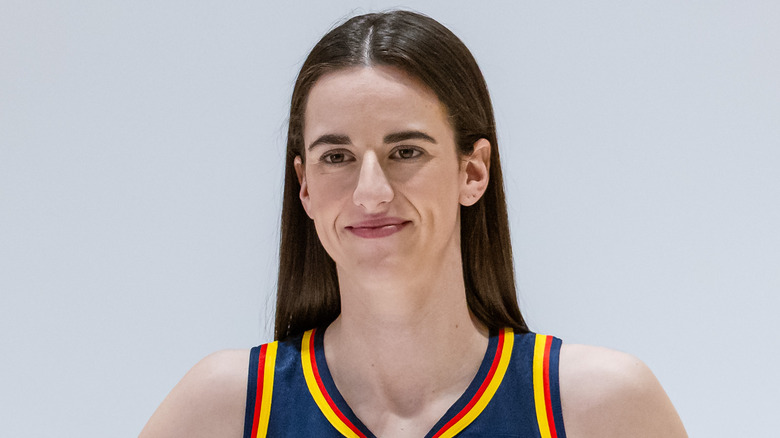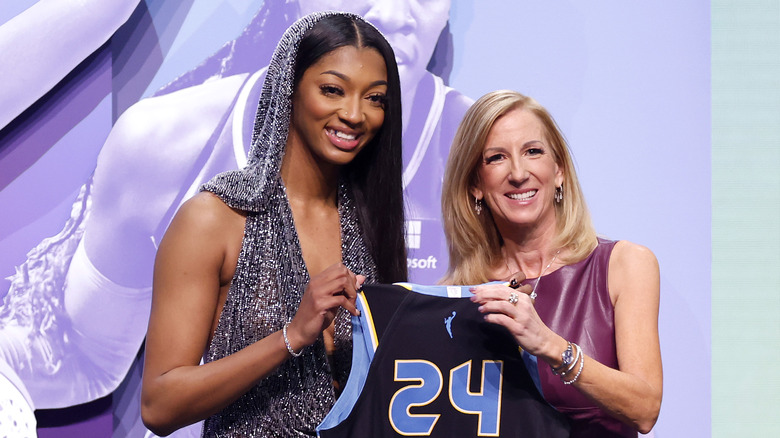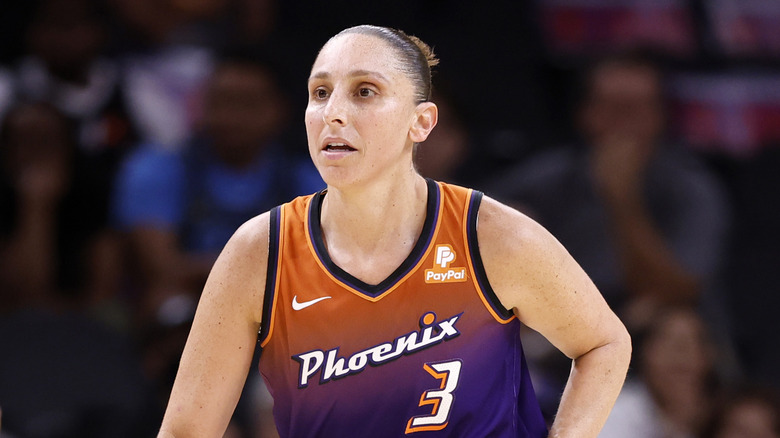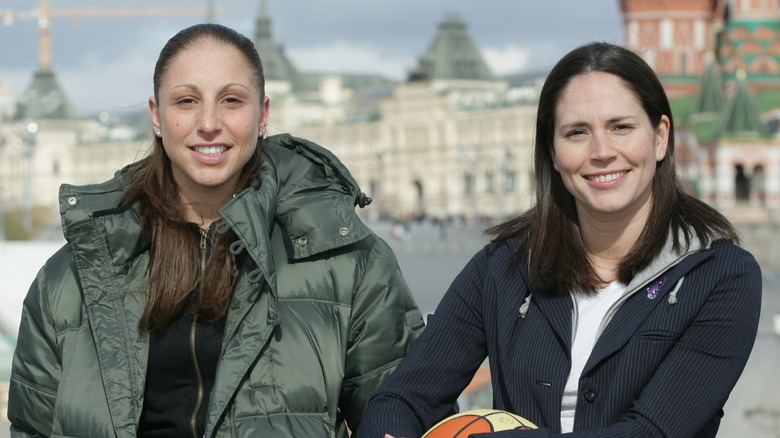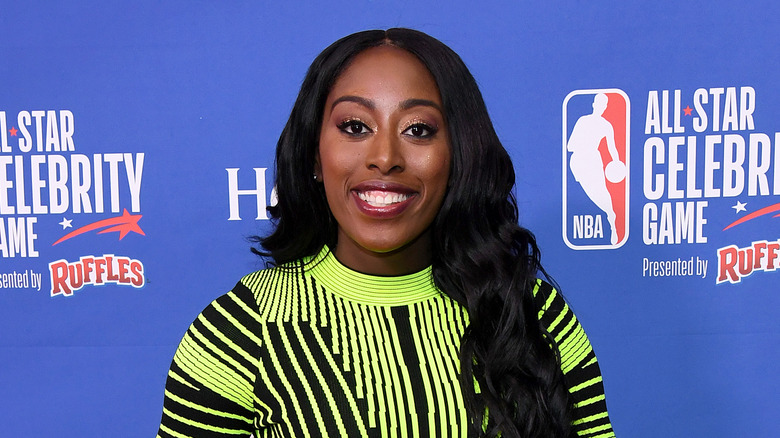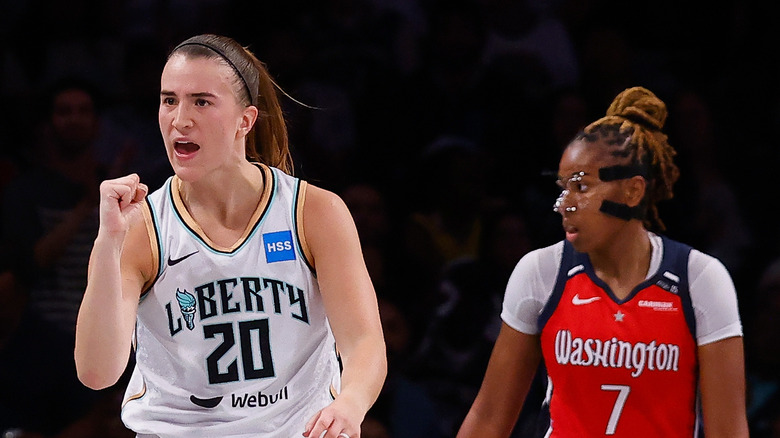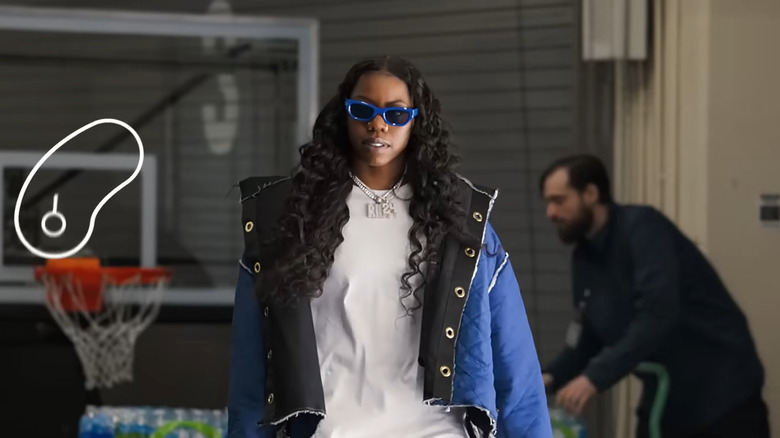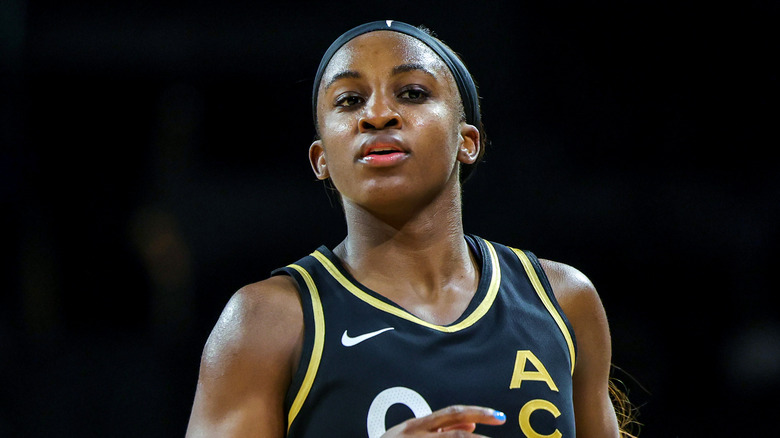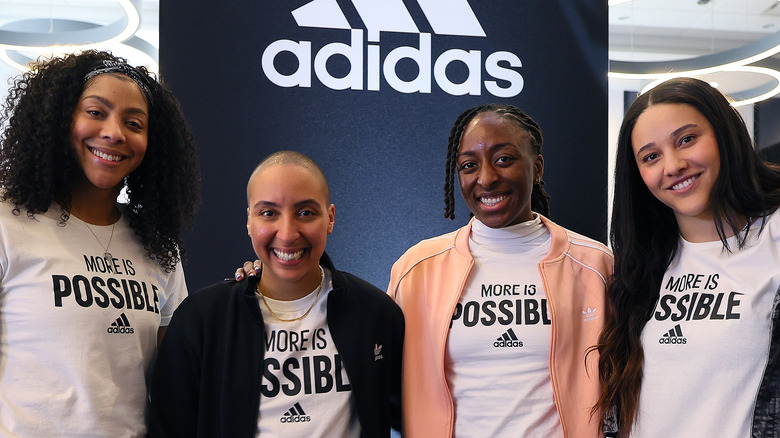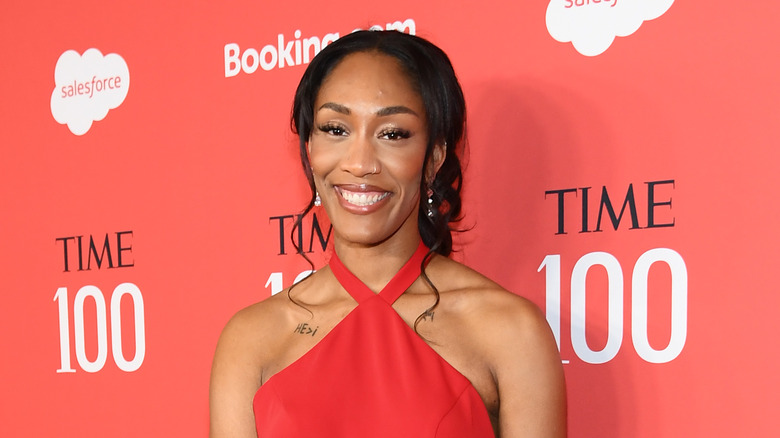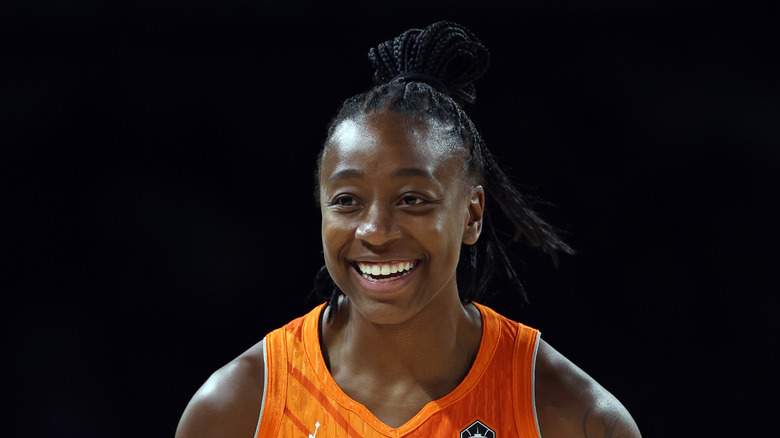How Much Do WNBA Players Actually Make?
On April 15, 2024, former Iowa Hawkeyes point guard Caitlin Clark achieved a lifelong dream of joining the WNBA when the Indiana Fever selected her as the No. 1 overall pick. Afterward, it came to light that Clark would be taking home $76,535 in her first season as part of a four-year deal in the neighborhood of $338,000. This figure was pitted against French basketball sensation Victor "Wemby" Wembanyama's reported $12.2 million rookie-year salary. It's a discourse that caught the eye of President Joe Biden, who tweeted, "Women in sports continue to push new boundaries and inspire us all. But right now we're seeing that even if you're the best, women are not paid their fair share. It's time that we give our daughters the same opportunities as our sons and ensure women are paid what they deserve."
In an August 2019 chat with CBS News, Phoenix Mercury guard Natasha "Tasha" Cloud revealed that the differences between the WNBA and NBA at the time extended far beyond pay and were evident even in how players traveled — while the latter enjoyed the luxury of private jets, the former had to deal with airport delays that came with commercial traveling. Both leagues' revenues are still worlds apart. Per Statista, the NBA made $10 billion in the 2022-23 season, while the WNBA recorded sales of $200 million. This begs the question, how much do the WNBA players actually take home?
WNBA players have bonuses and stock options
In an interview with CNBC, WNBA Commissioner Cathy Engelbert revealed that the reported earnings of Caitlin Clark were only a small portion of what she could make overall. "One thing, there's a false narrative out there about Caitlin herself and nobody ever just looks at base pay," Engelbert said, and continued, "It's proxy season, right? You look at base pay, plus bonus, plus stock options, etc. She'll have the ability to make up to $500,000 in just her W earnings this year."
According to the 2014 Collective Bargaining Agreement (CBA), which ran until 2021, each WNBA player was entitled to a bonus of $11,025 if they won a championship. In a similar fashion, players of teams that took second place each received $5,513, while those that got axed in the first and second rounds were paid $1,103 and $2,756, respectively. The league additionally offered bonuses to the MVP, capped at $15,000, and All-WNBA team members, who earned $10,000 or $5,000 depending on whether they were on the first or second teams.
These figures, in addition to bonuses for Rookie of the Year, Defensive Player of the Year, Most Improved Player, and Sportsmanship Award recipient — all of which were placed at $5,000 — had a small increase of between $75 to $450 per player in the 2020 Collective Bargaining Agreement.
Diana Taurasi called the 2014 Collective Bargaining Agreement 'horrible'
The WNBA and WNBPA's 2014 Collective Bargaining Agreement stated that players would be fined for various reasons. Players who skipped a regular season game had 2.5 % of their base pay deducted, while those who didn't show up to a playoff game received a 5% cut. More fines to the tune of $2,000 were imposed on players who failed to enter the league's program for marijuana-related offenses. — a drug therapy cause that includes diagnosis, treatment, and counseling. Those deductions came out of a dismal base salary of between $38,150 and $56,925, depending on the number of years a player had been on a team. WNBA players were vocal about earning more money.
According to Phoenix Mercury guard Diana Taurasi, the entire agreement was less than ideal. Speaking about low pay in the WNBA, Taurasi said in a 2018 interview, "I think it's gonna take drastic measures to get anything done ... We had an opportunity four years ago to take a stand as players; instead, we took a horrible CBA deal." The following year, Minnesota Lynx shooting guard Kayla McBride told KTNV-TV of seeking better salaries, "It comes with a lot of time and work and effort and conversations that just need to be had. And we're ready to have them. With the leadership we have, with our players association and in our league, and with these women, the time is now."
WNBA stars have made more money overseas
The allure of going overseas can be tempting. As such, it was reported in 2018 that WNBA teams had a bonus amounting to $54,000 that could be awarded to players for not leaving the United States during the offseason. The figure pales in comparison to what players can make abroad. For years, three-time WNBA champion Diana Taurasi, who was impressively the pioneer scorer of 10,000 career points, had lent her talents to Russia. She reportedly made a figure near $1.5 million playing for the country's UMMC Ekaterinburg. In 2015, Taurasi opted out of the WNBA season altogether. She told The New York Times, "I really didn't do it to make a stand. It was a very personal choice. My agent said it would be financially irresponsible not to do it ... I have no work experience. And this is my profession. Why shouldn't I try to make the most money I can?"
Although playing abroad displays the promise of an enormous income, the kind of high pay Taurasi received in Russia is only reserved for a select few. According to The Athletic, less than 10 WNBA players take over $500,000 home per season when playing overseas. For retired New York Liberty guard Chelsea Hopkins, who played in Israel, the most she made monthly was $12,000. Likewise, ex-Washington Mystics forward Erica McCall took home between $60,000 and $110,000 playing in Hungary, Spain, and the Republic of Türkiye.
The 2020 Collective Bargaining Agreement (CBA) guarantees full maternity leave compensation and a childcare stipend
Over the years, the WNBA has shown commitment to the welfare of players who are moms or moms-to-be. At the height of the COVID-19 pandemic, the league unveiled the "wubble," an isolated haven for the 2020 season (similar to the NBA's bubble in 2020, but for women). The establishment featured a Mommy & Me experience through playrooms for fun activities such as painting and artwork. As far as earnings go, the 2020 Collective Bargaining Agreement ensures that soon-to-be WNBA moms receive their full base salary when on maternity leave, have additional childcare payment of $5,000 every year, and are housed comfortably. The agreement further warrants up to $60,000 for long-term players' fertility-related needs like egg freezing.
Former Seattle Storm point guard Sue Bird, who transitioned behind the scenes after her retirement post the 2022 season, told The Seattle Times of the cutting-edge move, "When you look at things like what we're able to able to do with maternity leave and family planning ... We're going to be looked at as — I think — pioneers in the sports world." The improved maternity benefit adjustment is a far cry from the 2014 Collective Bargaining Agreement, which sought to pay players 50% of their base salary during maternity leave in addition to having their costs taken care of by insurance.
WNBA players are entitled to medical coverage, an employer-backed retirement plan, and other perks
Besides additional bonuses reflected in the 2020 Collective Bargaining Agreement, WNBA players had an increase in salary to a range of figures above $57,000 and $83,631. As of May 2024, the athletes are also contractually allocated several perks, the first of which is medical insurance for themselves and their families. The deductions range from $600 to $27,000, depending on whether a player is within the network or not. Even when a player's contract has been canceled, medical insurance stays put until a week has elapsed. WNBA players have access to dental insurance which foots bills of up to $1,000 for each player and their family members.
The WNBA takes the retirement needs of players seriously. Per the 2020 Collective Bargaining Agreement, the league allows unspecified deductions to go into a 401(k) plan and matches player payments by 25%. Before that, players were required to place 2% to 4% of their base salary into retirement savings. One-time WNBA champion Nneka Ogwumike remained diligent with the program, as she shared with CNBC in 2017. "I've maxed out my 401(k) every year so by the time I get out, I'll be good," Ogwumike revealed, and advised, "When it comes to managing your finances, once you start making more money you shouldn't get too carried away. You can't cut yourself off from things that you want — here and there you should treat yourself; you just have to be smart."
The Player Marketing Agreement (PMA) can fetch up to $250,000
To supplement their incomes, WNBA players can enter into a marketing deal with the league that has a yearly budget of $1 million. According to The Athletic, players in the program can make up to $250,000. Retired Los Angeles Sparks guard Jasmine Thomas, who entered into the agreement in 2022, told the publication, "The reason that PMAs came into account is because we're the product, we're the players, we're the face. So being that we are available, we are present and market ourselves, the better it ultimately is for the W, for the teams and our market."
In early 2024, the league selected six players as part of its marketing program. Each of them would participate in promotions featuring WNBA affiliates like Google, the Kim Kardashian-led Skims, and organic hair brand Mielle. In a light-hearted post on TikTok, the league shared what it's like behind the scenes during hair and makeup preparations for a commercial shoot. Seattle Storm guard Jewell Loyd, who was part of the squad, said in a conversation with CBS Sports, "It's a huge opportunity. I think it's a really good experiences [sic] for people to understand who I am and what makes me, me."
Each appearance made by a player on behalf of the league is not free. Per the 2020 Collective Bargaining Agreement, a cost of $750 applies.
The WNBA's top 2024 earners each make a reported income of more than $200,000
According to NBC 5 Dallas-Fort Worth, Las Vegas Aces guard Jackie Young is the WNBA's highest earner in 2024, and makes $252,420. Only 20 other players make figures above the $200,000 mark. Surprisingly, former Las Vegas Aces forward Candace Parker reportedly earned $100,000 before announcing her retirement, while famed Phoenix Mercury center Brittney Griner gets paid $150,000. Per the publication, Seattle Storm's Jewell Loyd makes $245,508, making her the WNBA's second highest-paid player. Loyd, who was the Storm's No. 1 pick in the first round of the 2015 WNBA draft, only made a reported base salary of $49,644 when she got started as a rookie.
According to Seattle Storm co-owner Sue Bird, who serves on the Collective Bargaining Agreement executive committee, rewarding top performers is a noble act. "You have to pay the top players," Bird voiced on the "Freakonomics" podcast. "And not because you don't want to pay the bottom players, but because, A, they deserve it. And B, it's going to then create a merit system."
Bird added that increasing the salaries of star players in the league would encourage most of them to buy a piece of it. At the time of writing, the ownership of the WNBA is majorly male dominated but includes ex-athletes like former Los Angeles Lakers point guard Magic Johnson and retired baseball star Alex Rodriguez.
Players mint millions from major endorsement deals
The real money in the WNBA comes from endorsement deals, and there's no cap on how far a player can go. Prior to her retirement after making history in the league, Candace Parker had one of the lengthiest collaborations with major shoe retailer Adidas, which began when she was in high school. The key to their long-lasting relationship is originality.
"Whenever you're authentic in who you are, and a brand is authentic in who they are, there are certain partnerships that just work," Parker remarked in a chat with Vogue during the reveal of yet another collection with the conglomerate. The relationship with Adidas grew stronger when Parker was announced as the lead of the brand's women's basketball division in May 2024. A year prior, Parker had made it to Forbes list of the top-earning female athletes with a reported income of $8 million.
Other players with brand deals include Las Vegas Aces forward A'ja Wilson, who announced that she'll be launching a shoe line with Nike in 2025. Exactly how much is such a deal worth? Per The Athletic, Caitlin Clark is looking at a $28 million collaboration with the same brand as of April 2024, which is way more than the $6 million Adidas offered the basketball star. Clark has already caught the attention of other brands like State Farm, Panini, and Gatorade, with whom she worked during college.
A'ja Wilson's book made it to the New York Times Best Sellers list
Away from the basketball court, WNBA players have ventured into the publishing industry. In February 2024, two-time WNBA champion A'ja Wilson released the book "Dear Black Girls: How to Be True to You," which retailed at $24 per copy. A little over a week after the book was published, Wilson tweeted that the book had flown off the shelves, writing, "Thrilled to announce that Dear Black Girls is officially a New York Times Best Seller!" Wilson wrote in part, "can't thank yall enough for making this happen."
Wilson is not the WNBA's only prominent author. On May 7, 2024, Brittney Griner, who is also the author of the 2014 release "In My Skin: My Life on and Off the Basketball Court," published the book "Coming Home." Griner announced in a tweet, "I'm honored to share my story with the world. A huge thank you to everyone who pre-ordered books! "
The body of work is an account of Griner's months-long 2022 detention in Russia, where she played for UMMC Ekaterinburg. Despite the fact that Russia had once been a lucrative destination for WNBA players — Griner reportedly made over $1 million each season — more players have opted to work with other countries. Griner has since made a WNBA comeback.
Some WNBA players have businesses on the side
Several WNBA players have ventured into business before and after retirement. In 2017, ex-Atlanta Dream player Angel McCoughtry took time off and ventured into the ice cream business. McCoughtry, who made $115,000 in the WNBA, told The New York Times, "I feel like a lot of people play ball and that's the only thing they know how to do. And so after they retire, they're lost ... [but] not Angel McCoughtry. I got an ice cream shop."
Similarly, former Indiana Fever star Tamika Catchings hung up her boots in 2016, and in 2023, she took over Tea's Me Café, a tea shop that has a central footing at Ivy Tech Community College. Speaking to the press, Catchings said she was hoping to make a difference by creating jobs within the community.
Months after Catchings' opening, two-time WNBA champion Jewell Loyd and her brother started a smoothie joint — Smoothie King — franchised in her neighborhood of Skokie, Illinois. "We want to make sure it's very community-based," Loyd said of the venture in an interview with The Chicago Tribune. "Everyone in Lincolnwood helped me grow up to where I am now. I have a responsibility to give back to people who gave to me. I want to continue to be a good person by paying it forward."

